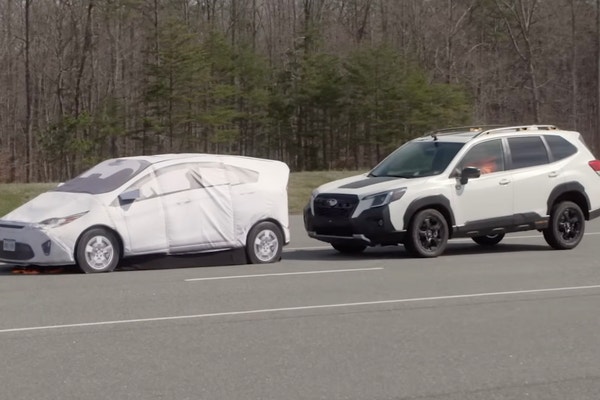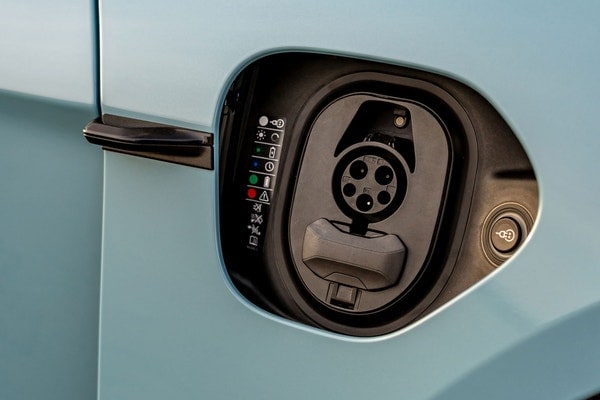Used 2016 Toyota Prius Three Touring Hatchback Review
Consumer reviews
Read what other owners think about the 2016 Toyota Prius Three Touring Hatchback.
Most helpful consumer reviews
Hey! 58 mpg ain't bad! 2016 Prius 3 Touring
Colorado Jack, Marshfield, MO, 08/01/2016
2016 Toyota Prius Three Touring 4dr Hatchback (1.8L 4cyl gas/electric hybrid CVT)
Four tanks of gas on my brand new 2016 Prius 3 Touring. Each one @ around 500 miles. Tank 1 = 56 mpg. Tank2=58 mpg. Tank 3=61 mpg. Tank 4= 57 mpg (driving over 11,000 ft. continental divide twice same day). Total AVG = 58 mpg. Most miles are highway, but drive it nearly everywhere including all my short shopping trips to store, etc. I'm very pleased. Before this, I owned a 2004 … Prius that I put 175,000 original miles on it. When I drove the 2004 over the continental divide, the mileage dropped into the low 40's. As shown on tank #4 stats above, the new Prius 3 held up immensely well at 57 mpg. One thing my wife definitely doesn't like is the lack of storage, but then again, you ought to see her purse! I actually wanted to try out a new 2017 Volt, but after seeing several write ups of inverter problems that are a huge mechanical problem to correct, I decided to stay with the Prius.
2016 Prius Touring is exactly what we want
tidycat, 08/23/2016
2016 Toyota Prius Three Touring 4dr Hatchback (1.8L 4cyl gas/electric hybrid CVT)
I have owned the 2016 Prius since Feb 2016. Both my wife and I love this car.
Last Summer we have driven this car cross-country, were comfortable and encountered no issues at all. We would not hesitate to do it again if necessary.
Our model has white interior below the instruments that causes glare at times. However the seat vinyl in our touring model are very comfortable.
The main … negative are the two tiny sun visors. They are way too small and useless in blocking out the sun on the side.
The hatch-back turned out to be a big plus as it enables us to carry a lot.
Got just what we wanted; like it more after 50K
Robert Greenstreet, Dallas, TX, 10/11/2016
2016 Toyota Prius Three Touring 4dr Hatchback (1.8L 4cyl gas/electric hybrid CVT)
We wanted the Toyota Safety Sense features, but not the moonroof--so we didn't want to buy the technology package. We also wanted a spare tire rather than a repair kit. The Prius Three Touring gave us just what we were looking for, and we are thoroughly enjoying those safety features. It is a Toyota, so everything works as promised, and we get two years of free maintenance. The biggest … problem with this car is that we want to take it everywhere--so we're racking up the miles. The claimed mileage range is not correct--so far we're averaging close to 55 mpg (rather than the 52 combined EPA figure.) Of course, we accelerate slowly and use the available feedback to stay in the ECO zone.... UPDATE--after 50,000 miles, we like the car even more. We've learned how to drive it and we're averaging about 56 mpg (I drove 61 miles to a town yesterday and used just under a gallon of gas.) We often take this car when we'll be driving after dark because the auto high beams are so effective. We have added a couple of memory foam seat cushions for long trips. Update: at nearly 15K, we're still averaging about 56 mpg. We would not do as well if we lived in a city, where we would need to accelerate more quickly. The seats have become more comfortable—both my wife and I have noticed it. We enjoy this car! Update: we are now closing in on 60K and we still enjoy this car. If we drop below 55 mpg we feel disappointed. We're just about ready to replace the OEM tires, which we have rotated every 5K. The Prius continues to perform very well. With the tires wearing (and lousy Oklahoma roads,) we get more road noise than we'd prefer--but smooth roads still mean quiet rides. We have had zero issues with this car.
Trust NOT the warranty!!
Malcolm, San Jose, CA, 06/10/2016
2016 Toyota Prius Three Touring 4dr Hatchback (1.8L 4cyl gas/electric hybrid CVT)
I bought my first Prius this year, a 2016 Mod 3 Touring. So far so good as far as any performance characteristics. However after about 3 weeks I noticed that a small panel ("tow point cover") on the left front of the car had fallen out. I inspected it and there seemed no damage of any sort, but the panel was gone. I had not in any way done anything that might damage my precious new car … (my first in 17 years). I took the car to the Berkeley dealer near my home, depending on Toyota's promise that any Toyota dealer would honor my warranty. The (notably sullen) service manager said "You must have bashed into something!" I protested that I hadn't and pointed out that there was not a scratch anywhere on the car. He inspected the car, checking every inch on or under the exterior and found no evidence at all. Agreeing that there was no evidence of any damage, he then said "You still might have hit something." Then he said "Toyota doesn't cover parts that fall off! Go talk to the Parts Department."
I contacted the dealership in San Francisco where I purchased the car. After hemming and hawing for over a week, they essentially said the same thing. They wanted $18.53 for the "tow point cover" plus cost of painting it.
The warranty sucks!!
_________________________________________________________________
The "tow point covers" have fallen out 3-4 times. (I've discovered that the covers are still on warranty.) The dealer tells me that this is a common problem with the model. The last time I had one replaced, the dealer took 10 months with 6-8 visits to do so. Then two months later it happened again. I only have 6400 miles on the car.
__________________________________________________________
I now have 17,000 miles (in 4 1/2 years) on the car. The plastic panels between the back door windows and the hatchback door have started to deteriorate with the finish peeling off.
Edmunds Summary Review of the 2016 Toyota Prius Three Touring Hatchback
Pros & Cons
- Pro:Outstanding fuel economy
- Pro:notably quieter and better-riding than past iterations
- Pro:generous cargo space
- Pro:significantly improved driving position.
- Con:Less backseat legroom than before
- Con:offset gauges out of driver's direct line of sight
- Con:polarizing styling.
Full Edmunds Review: 2016 Toyota Prius Hatchback
Edmunds Insurance Estimator
The Edmunds TCO® estimated monthly insurance payment for a 2016 Toyota Prius in Connecticut is:
not availableLegal







